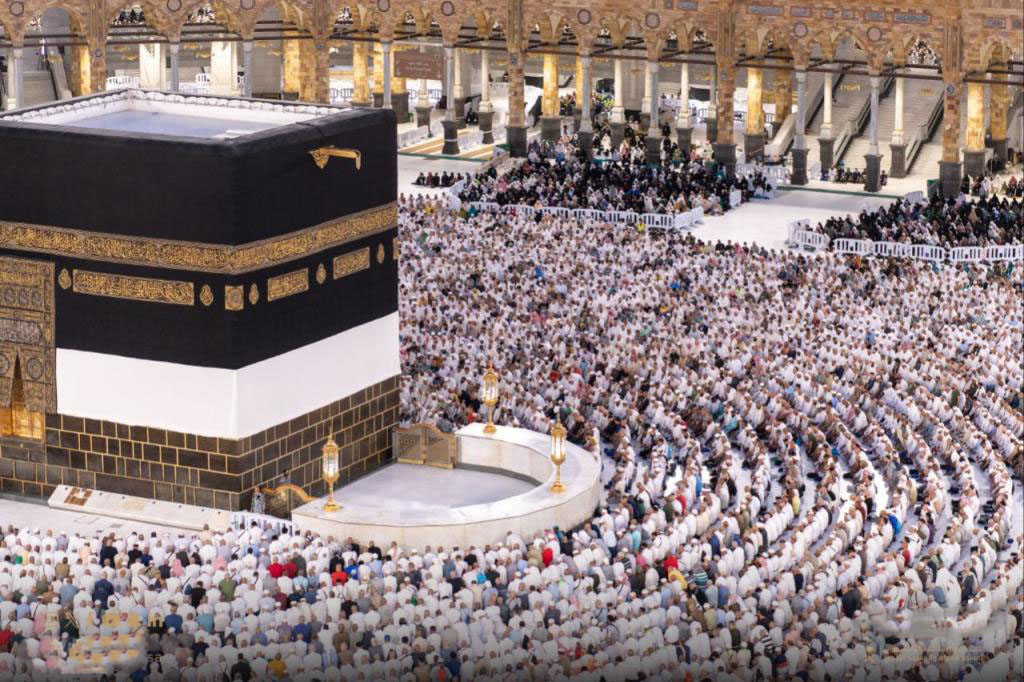Al-Hijr

The Hijr is the wall located to the north of the Ka’bah, forming a semi-circular shape. It is said that when Quraysh rebuilt the Ka’bah, they left part of the foundation laid by Prophet Ibrahim (peace be upon him) outside the structure, which was then encased to indicate it as part of the Ka’bah.
History and Events:
Quraysh’s Shortfall in Building the Ka’bah: When Quraysh built the Ka’bah, they fell short of rebuilding it exactly according to the foundation left by Ibrahim (peace be upon him). As narrated by ‘Aishah (may Allah be pleased with her), the Prophet ﷺ said: “Your people shortened the construction of the house, and had it not been for the recentness of their ignorance of shirk, I would have rebuilt it according to the original foundation of Ibrahim.” (Sahih Muslim).
Reconstruction by Abdullah bin Zubair: After the fire that damaged the Ka’bah during the time of Yazid bin Muawiya, Abdullah bin Zubair dismantled the Ka’bah and rebuilt it according to the original foundation desired by the Prophet ﷺ. He added five or six cubits from the Hijr to the Ka’bah, and made it have two doors.
Restoration by Hajjaj bin Yusuf: After the defeat of Abdullah bin Zubair, Hajjaj ordered the Ka’bah to be rebuilt in its previous form as built by Quraysh and removed the additions made by Abdullah bin Zubair.
Length of the Hijr: There are varying narrations about the length of the Hijr part that is considered part of the Ka’bah, ranging from five to six cubits. Scholars have combined these reports, concluding that the Hijr is only part of the Ka’bah.
Dimensions of the Hijr:
According to al-Azraqi and Al-Fasi, the width from the wall of the Ka’bah to the wall of the Hijr is 17 cubits and 8 fingers, and the distance between the two doors of the Hijr is 20 cubits.
In modern measurements, the length of the Hijr from the centre of the circular inner area to the outer wall of the Ka’bah is approximately 8.46.5 meters.
Construction of the Hijr Through History:
First Covered with Marble: The first to cover the Hijr with marble was Caliph Abu Ja’far Al-Mansur in 140 AH.
Reconstruction by Caliph Al-Mahdi: He renovated the marble of the Hijr in 161 AH.
Saudi Era Restoration: In 1397 AH, the Hijr was carefully renovated and its floor covered with cold stone from Greece. In 1417 AH, the old marble was replaced with new during the comprehensive restoration of the Ka’bah.
Importance of the Hijr in Islam:
The Hijr is considered a blessed place for prayer and supplication, as it is part of the Ka’bah. The Tawaf around the Ka’bah should be performed outside the Hijr, as it is considered part of the house of Allah.
Conclusion:
The Hijr symbolizes the rich history of Islam and reflects the immense care and reverence Muslims have shown toward the Ka’bah across different eras. It represents an integral part of Islamic heritage, having witnessed numerous alterations, all of which reflect Muslims’ devotion and their efforts to preserve this sacred site.